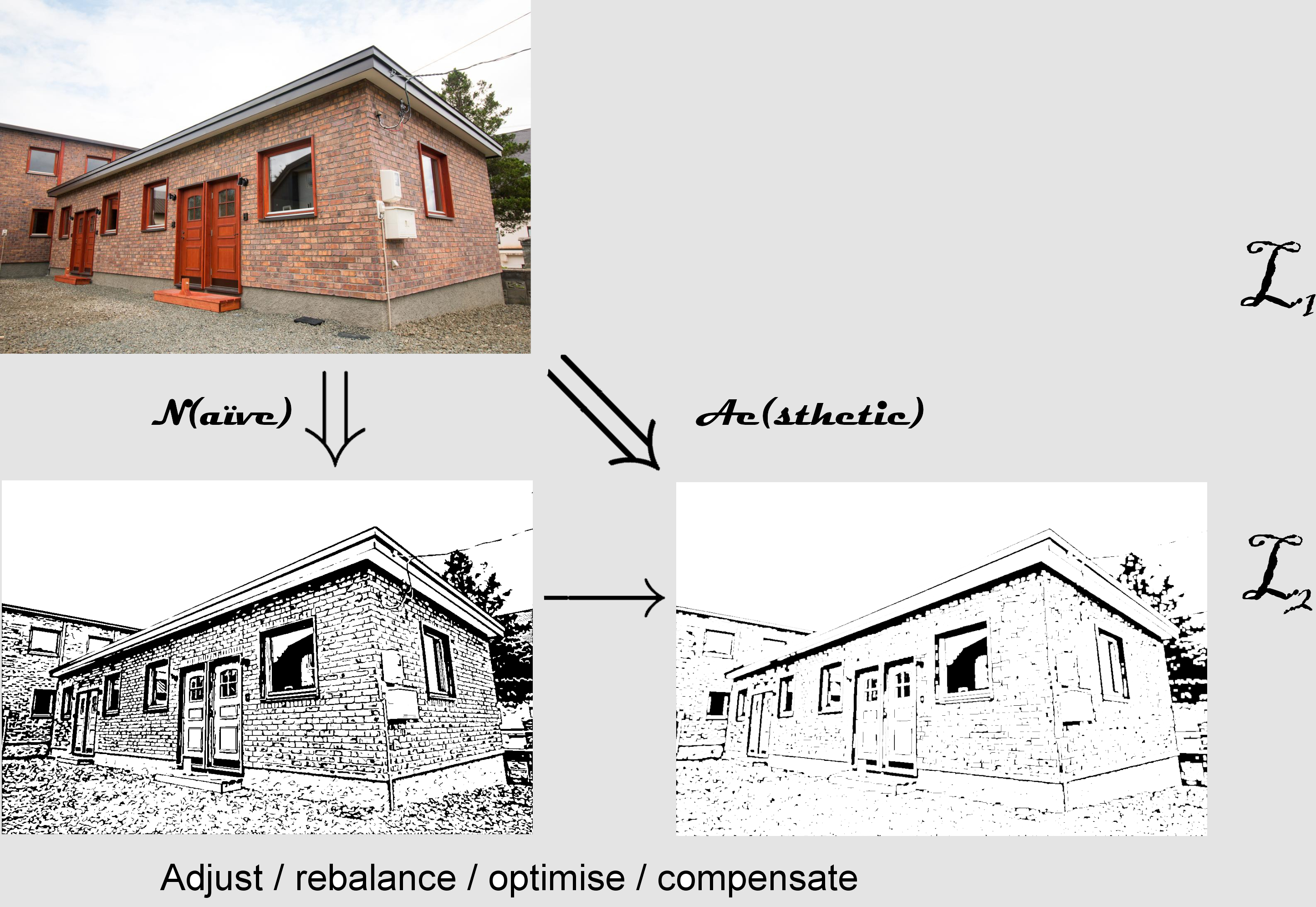
| "Rules: Logic and Applications" 2nd Workshop, Dec,
2019 |
| Aesthetic Morphisms |
| Jocelyn Ireson-Paine |
| www.jocelyns-cartoons.uk/rules2019/ |
Generalised Inverses and Generalised Equivalances
|
Two interesting ideas arise from this:
-
The right-pointing arrow in my
diagram can be regarded as a
generalised inverse. It tries
to undo the bad effects of the translation
N. If it knew how, it would
undo them all. But the language
of pen-and-ink does not permit
this. So it just does the best it
can.
-
The diagonal arrow Ae in my
diagram can be regarded as a
generalised equivalence.
It tries to make the effect of
the picture on the viewer as
close as possible to the effect
of the original scene on the
viewer, given the restrictions
of pen-and-ink. They can never
be identical, because their
languages are so different. But
in a deeper sense, they can
be regarded as equivalent.
|

|
This way of thinking about drawing is,
I was pleased to discover, supported by
the graphics researcher Frédo Durand.
In
"An Invitation to Discuss Computer
Depiction",
Durand writes:
❝
We have argued that depiction
involves complex interactions
between the scene and the picture, and that different contexts result in
very different depiction strategies. Because pictures always have a
purpose, producing a picture is essentially an optimization process.
Depiction consists in producing the picture that best satisfies the goals.
The specification of these goals and the assessment of the quality of the
result are obviously intricate issues that go well beyond the scope of
computer graphics. Nonetheless, understanding the optimization nature of
picture generation has important consequences. This ties up with the
previous discussion, in that it invalidates the simple unidirectional
projective view of computer graphics.
❞
Durand goes on to discuss the use of "pictorial techniques" —
such as adding depth cues — in such optimisation, and to
formulate this use in terms of inverses and equivalances.
There's more about this in
my
"Drawing as
Optimisation". See also the
link to Durand's paper in the References.



